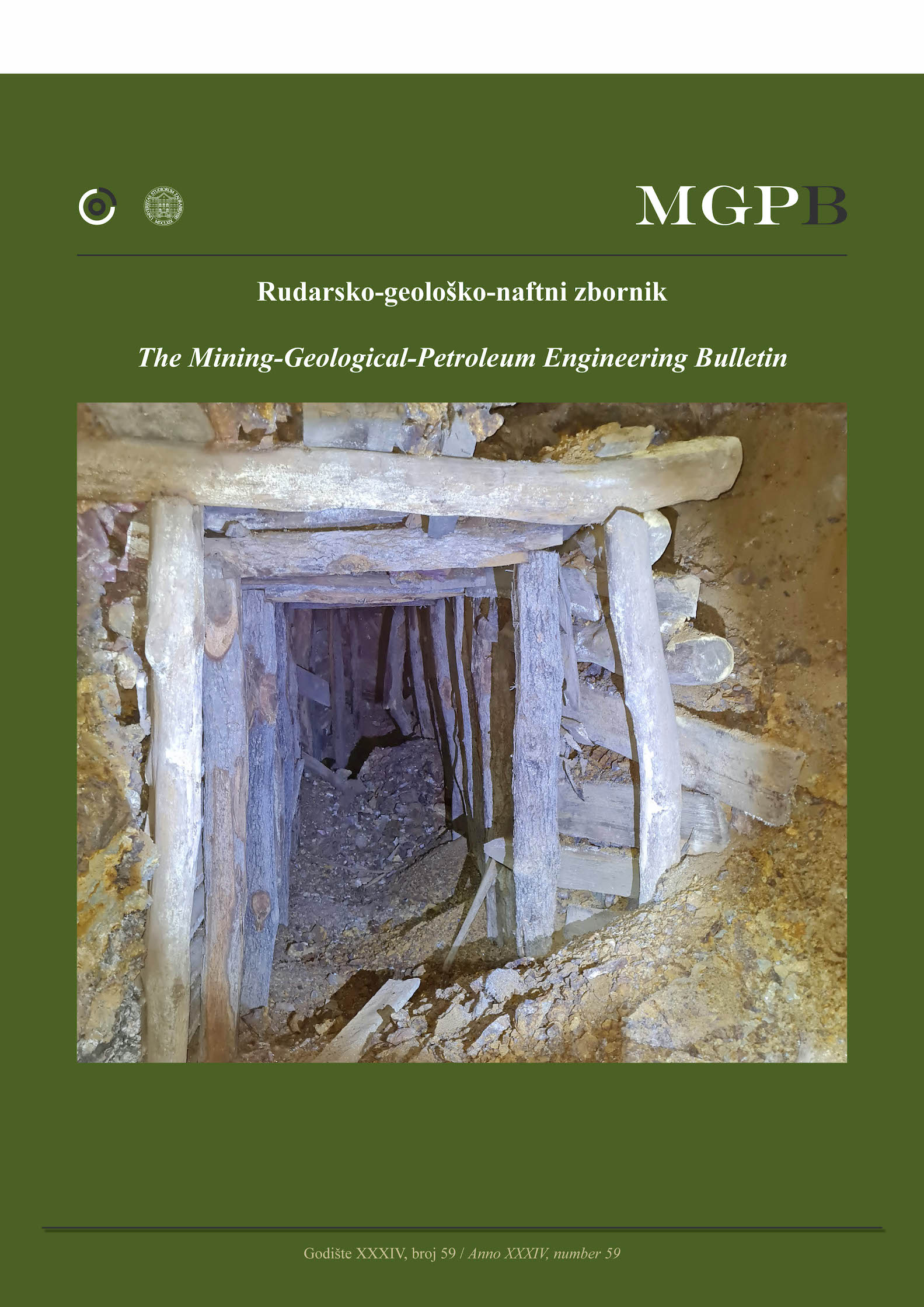Structural analysis and reservoir characterisation of Cretaceous sequence in Kohala Bala, Khyber Pakhtunkhwa, Pakistan
DOI:
https://doi.org/10.17794/rgn.2022.3.6Keywords:
Himalayan Fold-Thrust belt, reservoir characterization, southern Hazara Pakistan, SEM analysis, plug porosityAbstract
The southeastern Hazara is a portion of the Himalayan Fold-Thrust Belt, formed by the interaction of the Indian Plate with the Eurasian Plate. The present research was conducted to analyse the structural geometry and assess the reservoir potential of the Cretaceous sequence (Chichali Formation and Kawagarh Formation) in southern Hazara, Pakistan. The mapped stratigraphic units range from Late Jurassic, Samana Suk Formation to early Eocene, Margalla Hill Limestone, along with unconformities. The research area is under intense deformation and is characterised by the thrust faults with accompanying folds. The fore-thrust faults are steeply dipping towards the north with associated back-thrust dipping southward, and the folds are mainly asymmetric anticlines and asymmetric synclines along with symmetric anticline (Barkot). The structures trend mainly NE-SW, indicating NW-SE compressive stresses. Reservoir quality is evaluated by using petrographic image analysis, SEM analysis, plug porosity, and permeability analysis. The porosity observed varies from 0.282% – 10.89%, 0.016% – 1.78% in Chichali (Sandstone) Formation and Kawagarh (Limestone) Formation, respectively. Simultaneously, the measured permeability in Chichali and Kawagarh Formation varies from 0–0.064 mD and 0–0.014 mD, respectively. The primary porosity type was intergranular/interparticle, intragranular, fracture, and vuggy porosity. SEM analysis shows that microporosity is present in the Cretaceous sequence and, calcite, dolomite, quartz, feldspar, and pyrite are the major minerals. The reservoir studies show that the Chichali Formation can be proven a good (Tight) reservoir rock, and Kawagarh Formation may prove as a reservoir (if the fractures in the subsurface, formed by severe tectonic deformation are not filled with cementing material) and seal/cap rock.
Downloads
Published
How to Cite
Issue
Section
License
Copyright (c) 2022 authors and journal

This work is licensed under a Creative Commons Attribution 4.0 International License.
Creative Commons-BY
Authors who publish with this journal agree to the following terms:
In agreeing this form, you certify that:
- You read the ethical codex of the RGN zbornik available at journal web.
- You submitted work is your original work, and has not previously been published and does not include any form of plagiarism.
- You own copyright in the submitted work, and are therefore permitted to assign the licence to publish to RGN zbornik.
- Your submitted work contains no violation of any existing copyright or other third party right or any material of an obscene, libellous or otherwise unlawful nature.
- You have obtained permission for and acknowledged the source of any illustrations, diagrams or other material included in the work of which you are not the copyright owner.
- You have taken due care to ensure the accuracy of the work, and that, to the best of your knowledge, there are no false statements made within it.
- All co-authors of this submitted work are aware of, and in agreement with, the terms of this licence and that the submitted manuscript has been approved by these authors.
Publication licence
You retain copyright in your submitted work, according to journal license policy (CC-BY). By signing this form you agree that RGN zbornik may publish it under the publication licence. In summary the licence allows the following:
Anyone is free:
- To copy, distribute, display, and perform the work.
- To make derivative works.
Under the following conditions:
- The original author must always be given credit.
- The work may not be used for commercial purposes.
- If the work is altered, transformed, or built upon, the resulting work may only be distributed under a licence identical to this one.
Exceptions to the licence
In addition to publishing the work printed under the above licence, RGN zbornik will also enable the work to be visible online.
The journal editorial can change the licence rules anytime but it cannot retroactively restrict author(s) rights.


